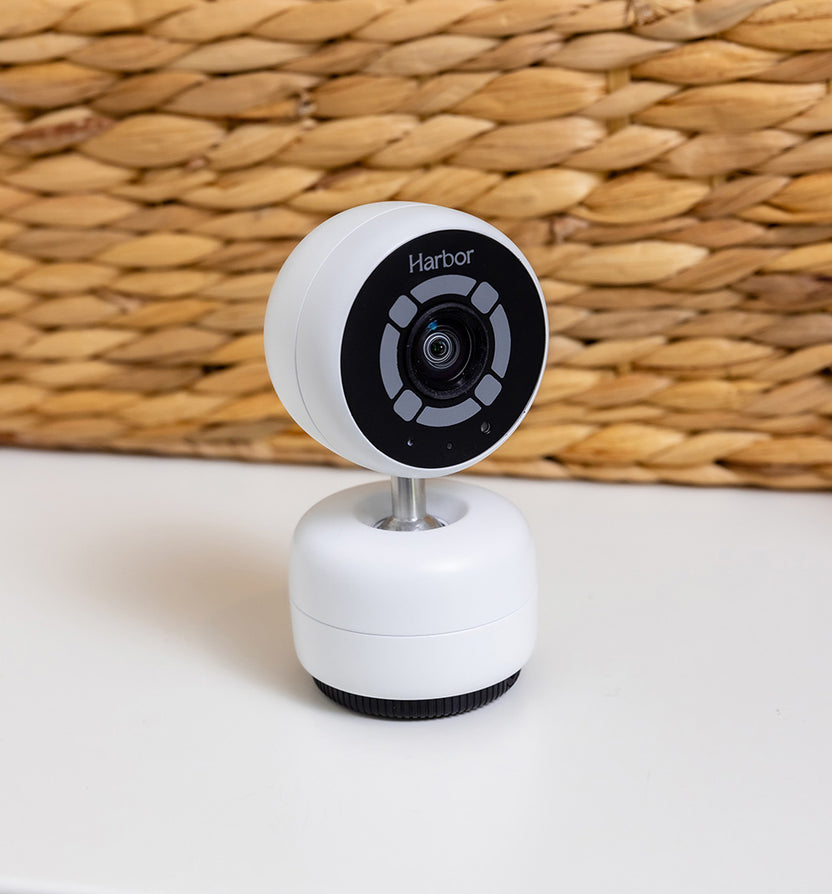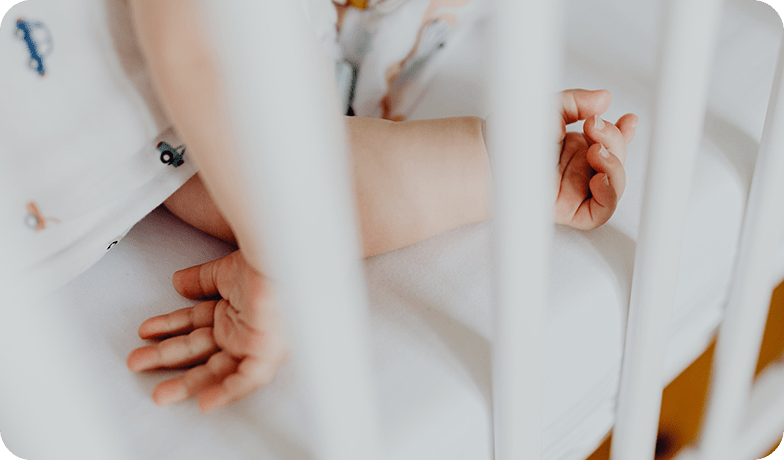
Written by: Angela McPhillips, DNP, RN
The three- to six-month window is a thrilling time in baby’s development! Gone are the days of newborn snuggles and cluster feeding—they’re now full of energy, curiosity, and personality. This is the age when baby begins to move, explore, and engage in new and exciting ways.
By six months, baby is becoming an active participant in their world, ready to tackle new challenges and master critical developmental skills. Understanding what to expect during this stage helps you celebrate baby’s progress, support their growth, and address potential concerns early.
In this guide, we’ll explore the major milestones for six-month-olds, provide practical tips to encourage their development, and empower you to make the most of this exciting time with your little one!
What’s typical at six months?
Around six months, your little one will likely reach some big milestones. While every child grows at their own pace, these guidelines highlight what most babies are doing at this age…
Physical milestones at six months
Baby is gaining strength and coordination to prepare for sitting, crawling, and eventually walking.
-
Rolling over: Many babies will now roll from tummy to back and back to tummy.
-
Pushing up: During tummy time, baby may push themselves up with straight arms or lift their chest.
-
Sitting with support: Some babies can sit with minimal support, using their hands to steady themselves, often called tripod or propped sitting.
-
Grasping and reaching: Baby might reach for toys and grasp them with ease, even transferring them between hands!
Social and emotional milestones at six months
Baby’s personality is starting to shine! They’re developing stronger social bonds and a love of playtime.
-
Laughing: Amp up playtime silliness to get the giggles rolling. Try an exaggerated game of peek-a-boo or popping your head around the corner when they least expect it.
-
Recognizing faces: Baby can distinguish familiar faces from those of strangers, which can lead to shy or clingy behavior.
-
Expressing emotions: Smiles, squeals, and even frowns are ways baby will start to communicate their feelings.
Cognitive milestones at six months
Baby’s growing curiosity will drive them to explore and learn.
-
Object exploration: Baby will use their mouth and hands to explore toys and objects.
-
Tracking movements: Your little one will follow objects with their eyes as they move across their field of vision.
-
Cause and effect: Baby may drop a toy repeatedly, watching it fall and expecting you to pick it up. You might not find this fun, but it's helping them learn!
Language and communication milestones at 6 months
At six months, your little one will be laying the groundwork for speech and communication.
-
Babbling: They may experiment with sounds like “ba,” “da,” or “ma.”
-
Recognizing names: Baby might turn their head when you say their name.
-
Expressive sounds: From coos to squeals, baby will be learning to express themselves through sound.
How you can support baby’s development
Supporting baby’s growth doesn’t have to be complicated. Here are some fun, simple activities tailored to their developmental stage…
Encouraging physical development at six months
-
Make tummy time dynamic: Place toys just out of reach, in front and/or beside them, to encourage reaching and rolling.
-
Support sitting practice: Prop baby up with pillows or sit behind them to help them balance.
-
Strengthen their grip: Offer toys of different sizes and textures to encourage grasping and transferring.
Fostering social and emotional development at six months
-
Play interactive games: Games like peek-a-boo or patty-cake are perfect for this age.
-
Build trust through routines: Predictable routines for feeding, play, and sleep help baby feel secure.
-
Respond to their cues: Smiling back at them and mimicking their sounds reinforces their attempts at communication.
Boosting cognitive development at six months
-
Explore sensory play: Introduce toys with different textures, colors, and sounds to engage their senses.
-
Encourage problem-solving: Let baby figure out how to reach for a toy and/or move it.
-
Model cause and effect: Shake a rattle or press a button on a toy to show them how actions create reactions.
Supporting language development at six months
-
Talk throughout the day: Narrating your activities helps baby associate words with actions.
-
Sing and read: Songs and simple board books introduce rhythm and vocabulary.
-
Respond to babbling: Encourage their sounds by repeating them and adding words.
How to support baby in rolling over
Rolling is one of the first major motor milestones baby will achieve. This skill usually develops between four and six months as baby builds the strength and coordination to flip from tummy to back and, eventually, from back to tummy.
Here’s how you can help them master this skill:
5 tips to encourage rolling
-
Tummy time is key: Tummy time strengthens the muscles baby needs to roll, especially their neck, shoulders, and core. Offer regular tummy time with engaging toys or mirrors placed to the side to motivate them to turn and reach. Hold toys up high to encourage baby to push up with straight arms—this preps their muscles for crawling!
-
Use visual stimulation: Place a favorite toy or a colorful object just out of reach to encourage baby to roll toward it. Slowly move it from side to side to guide their movement.
-
Gentle assistance: If baby is trying to roll but struggling to do so, gently guide their hips or shoulders to show them how rolling feels. Over time, they’ll figure it out on their own!
-
Incorporate side-lying play: Place baby on their side with a rolled-up towel behind them as a bolster. This position encourages them to practice the motions of rolling back and forth.
-
Happy baby: Use socks with bells or flaps to encourage baby to reach for their feet, also called the “happy baby” pose. This hand-to-feet posture works all the muscles required to roll, including their lower and upper abdominals.
Safety tips for rolling
-
Always supervise baby during tummy time and rolling practice.
-
Never leave baby unattended on elevated surfaces, like a couch or bed, as they could roll unexpectedly.
Rolling is not only a significant physical milestone but also a confidence booster for baby. Celebrate their progress and remember that every attempt helps them get stronger and closer to mastering the skill!
Delayed milestones: When to call your pediatrician
While each baby develops at their own pace, certain signs might indicate developmental delays. Here’s what to watch for at six months:
-
Not rolling over or pushing up with straight arms during tummy time
-
No interest in reaching for objects or toys
-
No response to sounds or turn toward familiar voices
-
Appearing overly stiff or floppy when picked up
-
Not making sounds like babbling or laughing
If you have concerns, trust your instincts! Early intervention can make a big difference in supporting baby’s development.
-
Provide a safe “yes” space for exploration: Setting up a safe play environment is key to nurturing baby’s natural curiosity. A playpen with a cushioned mat and safe toys encourages them to explore their body and surroundings. Placing toys to the front, sides, or just out of reach motivates them to roll, reach, and push up on their arms, supporting their gross motor development.
-
Let them lead the way: Play doesn’t have to mean constant interaction. Giving baby room to explore on their own while you supervise is one of the best ways to foster their development, confidence, and independence. Let them play with a mix of toys, baby-safe household items, and containers, like baskets or bowls, to promote learning and exploration.
Celebrate the journey
Watching baby grow is one of the most rewarding parts of parenthood. You’re doing an incredible job!
Curious about what comes next? As your baby approaches nine months, they’ll take exploration to the next level by crawling and showing off their personality in new ways.
Bookmark this series and come back to it as baby reaches new milestones. You can also share it with fellow parents as a great way to support and celebrate each other on this beautiful journey!
Go-to resources to help you monitor, track, and support baby’s development
-
American Academy of Pediatrics Ages & Stages
-
Nemours KidsHealth Growth & Development
-
Pathways.org, resources, including games and videos, developed with and approved by pediatric physical and occupational therapists and speech-language pathologists
-
Harvard University’s Center on the Developing Child for a deep dive into the science behind child development





